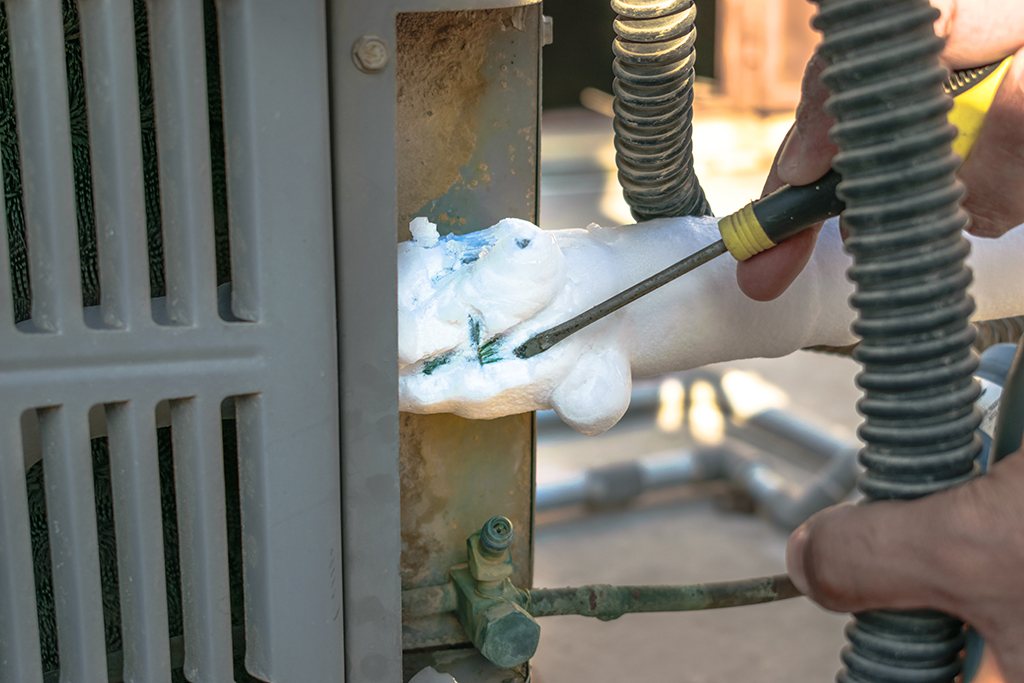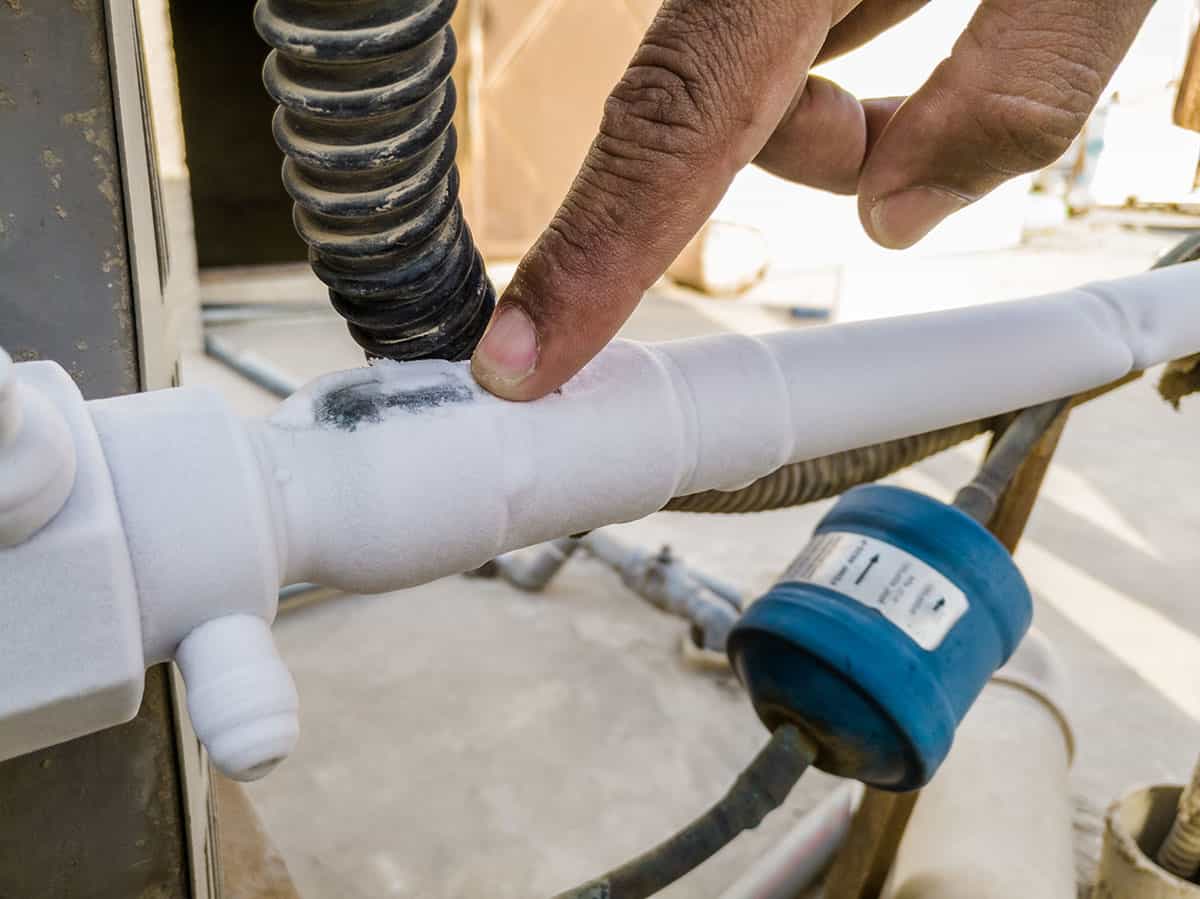Steps to Follow When Your AC Pipe Freezes: Crucial Tips
Steps to Follow When Your AC Pipe Freezes: Crucial Tips
Blog Article
Are you trying to locate know-how around Why Is Ice On My Outside Air Conditione?

Introduction
Discovering that your AC pipeline is frozen can be concerning, particularly during warm summertime when you rely upon your a/c one of the most. Comprehending what to do in such a circumstance is essential to prevent further damage to your cooling system and guarantee your convenience indoors.
Recognizing the Causes
A number of elements can add to the freezing of an air conditioning pipeline. Understanding these reasons can help you resolve the problem successfully.
Lack of Airflow
One usual reason for an icy AC pipe is inadequate air movement. When the airflow over the evaporator coil is limited, it can trigger the coil to drop below freezing temperature, leading to ice formation on the pipe.
Reduced Refrigerant Levels
Insufficient cooling agent levels in your a/c system can also lead to an icy pipeline. Reduced cooling agent degrees can trigger the stress in the system to go down, bring about the cold of moisture on the evaporator coil.
Cold Weather Conditions
In colder climates, freezing temperature levels outside can add to the cold of a/c pipes. If your AC unit is not properly insulated or if there are leakages in the ductwork, cool air can infiltrate the system, causing the pipeline to ice up.
Dirty Air Filters
Filthy or blocked air filters can limit airflow in your a/c system, leading to different concerns, including an icy pipeline. It's important to change or cleanse your air filters consistently to ensure appropriate air movement and prevent ice buildup.
Indications of a Frozen A/c Pipe
Identifying the indicators of an icy a/c pipe is critical for punctual activity.
Lowered Airflow
If you see a significant decrease in air flow from your vents, it can show a frozen pipeline.
Ice Buildup on the Pipe
Noticeable ice accumulation on the refrigerant line or the evaporator coil is a clear sign of a frozen air conditioning pipeline.
Unusual Sounds from the Unit
Unusual sounds, such as hissing or bubbling, coming from your AC system can signify that there's ice existing on the pipeline.
Immediate Actions to Take
When faced with an icy air conditioning pipe, it's necessary to act promptly to avoid more damages to your cooling system.
Shutting off the air conditioner
The primary step is to shut off your a/c to stop the system from running and intensifying the problem.
Looking for Blockages
Inspect the area around the indoor system for any type of obstructions that may be blocking airflow, such as furniture or drapes.
Defrosting the Pipe
You can make use of mild approaches like putting towels soaked in warm water around the frozen pipeline to aid thaw it slowly.
Preventive Measures
Taking preventive measures can help stay clear of future incidents of an icy air conditioning pipeline.
Routine Maintenance Checks
Schedule normal upkeep contact an expert HVAC professional to make certain that your AC system is running successfully.
Altering Air Filters
Routinely change or cleanse your air filters to avoid airflow constraints and keep optimum performance.
Insulating Exposed Pipes
If your air conditioner pipelines are subjected to chilly temperature levels, think about shielding them to stop freezing during cold weather.
Looking For Professional Help
If DIY methods fall short to deal with the problem or if you're not sure concerning just how to proceed, it's finest to look for help from a certified HVAC service technician.
When DIY Methods Fail
If your efforts to thaw the pipe or address other problems are not successful, it's time to hire an expert.
Significance of Hiring a Professional HVAC Technician
A qualified HVAC professional has the proficiency and tools essential to identify and fix problems with your air conditioning system securely and efficiently.
Final thought
Handling an icy AC pipeline can be a frustrating experience, yet understanding how to respond can help decrease damage and bring back convenience to your home. By comprehending the causes, identifying the indications, and taking prompt activity, you can efficiently address the problem and protect against future events.
Frozen AC Line: Why It Happens & What To Do About It
A frozen AC line can be a rather peculiar sight in a place like Phoenix, Arizona where nothing ever freezes. In this post, we’ll discuss what makes an air conditioner line frozen – and what you can do about it.
Dirty Air Filters
Did you know that you should be cleaning or replacing your air filters on a monthly basis? Failing to do this can result in airflow issues that, in turn, cause your evaporator coils and lines to freeze over. You’ll notice a buildup of ice on both components, although the buildup on your pipes will, of course, be more evident unless you open your air condition up to reveal the coils.
What To Do About It
Give your air filter a good cleaning if it’s reusable. If not, replace the filter outright. Next, switch your air conditioner’s fan setting on and leave it there for 2-3 hours. This will draw warm air in, helping to thaw your evaporator coil. You can also check out this article for some tips on cleaning the coils themselves if you’d like to speed the process up. Before you switch the unit back to its normal state, make sure the supply vents are completely unobstructed and free of dust or other debris.
If you keep having this issue even after replacing your filters regularly, contact a local HVAC repair company and have them inspect your evaporator coil, ductwork, and any other components that may be at fault. If you live in the Phoenix, Arizona area, give American Home Water and Air a call.
Low Refrigerant Levels/Leakage
What To Do About It
Contrary to what air conditioner “recharge” companies often tell their clients about refrigerant, it should never need to be simply refilled. You see, refrigerant runs in what experts refer to as a “closed loop.” Refrigerant really shouldn’t be leaving that loop. If it is, you’ve got a leak.
Paying someone to come and pump more refrigerant into your system (aka “recharge” it) isn’t the solution. Doing that will simply kick the can down the road. Besides, refrigerant leaks can be harmful to the environment and people in your home.
Rather, you need to take care of the leak with the help of a technician. Check out this article for some more information about dealing with air conditioners that are leaking refrigerant. Before you contact a technician, switch your thermostat to the off position. Then, switch the fan setting on and let it run for 2-3 hours so the unit can thaw.
Improper Temperature Setting
Improper temperature settings can also cause a drop in your air conditioner’s pressure. What many people don’t realize is that air conditioners are actually designed to run when temperatures have fallen above roughly 60 degrees Fahrenheit. If you run the unit when it’s cold outside, you’ll run into many issues, including frozen components.

I am very fascinated with Why Is Ice On My Outside Air Conditione and I hope you appreciated my blog post. Sharing is good. Helping people is fun. Thanks a lot for going through it.
Click Here Report this page